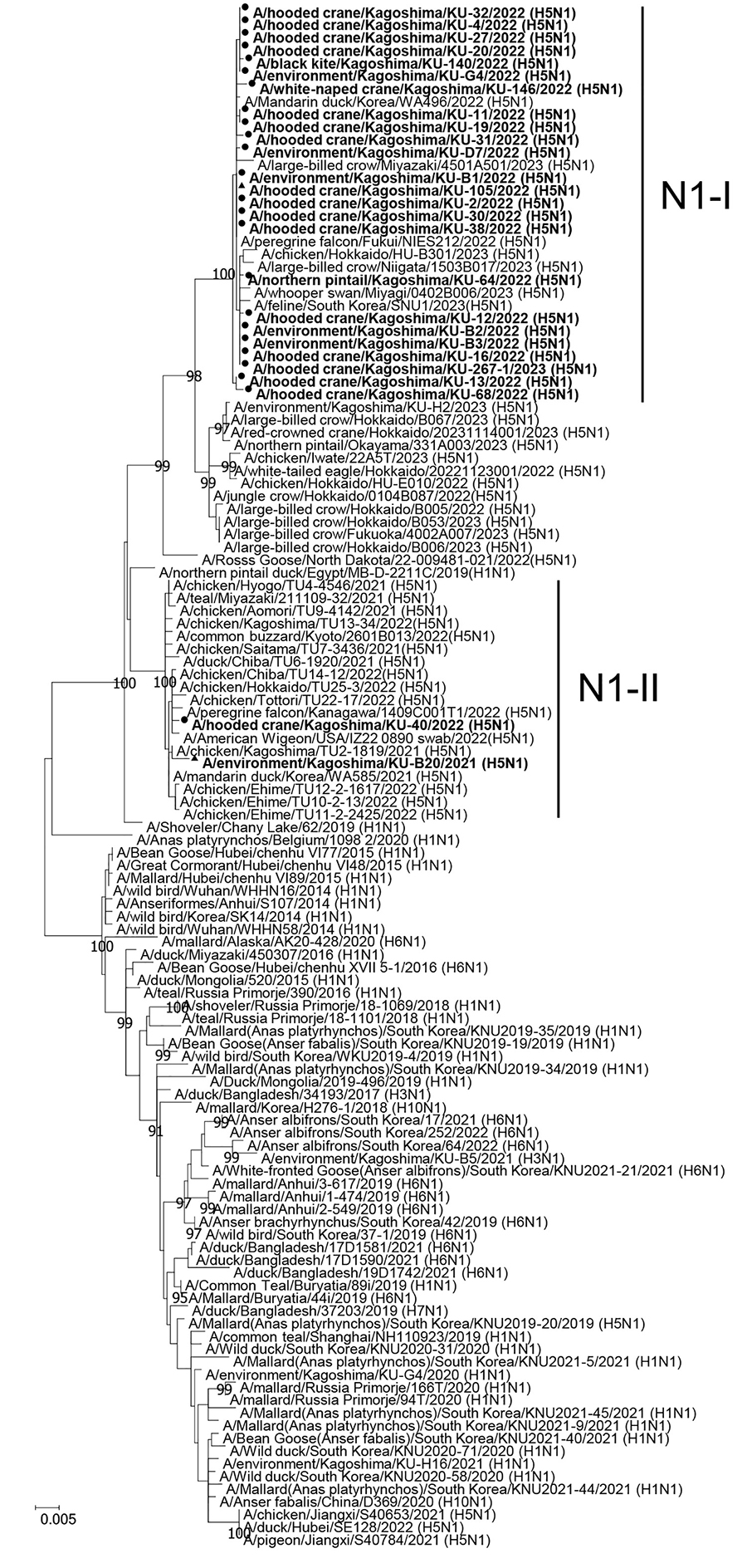Disclaimer: Early release articles are not considered as final versions. Any changes will be reflected in the online version in the month the article is officially released.
Volume 31, Number 5—May 2025
Research
Highly Pathogenic Avian Influenza A(H5N1) Outbreak in Endangered Cranes, Izumi Plain, Japan, 2022–23
Figure 6

Figure 6. Phylogenetic trees of N1 neuraminidase (NA) genes from avian influenza virus gene–positive cranes from the 2022–23 winter season in the Izumi Plain, Japan, compared with reference sequences. Tree was constructed using the maximum-likelihood method with a bootstrapping set of 1,000 replicates. Nodes with bootstrap values >90% are shown. Circles indicate isolates from the 2022–23 winter season. Triangles indicate H5 NA genes of highly pathogenic avian influenza viruses used for the hemagglutination inhibition assay. Scale bar indicates nucleotide substitutions per site.
1These authors contributed equally to this article.